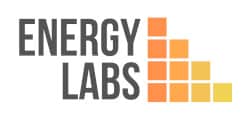Asthma and allergy sufferers can benefit greatly from the use of a decentralized heat recovery ventilation system. These systems work by extracting stale air from the building and supplying fresh air into the room, while recovering as much thermal energy as possible during the process.
One of the main benefits of decentralized systems for asthma and allergy sufferers is that they include filters that remove pollutants and allergens from the air. This can help to improve indoor air quality and reduce the risk of asthma and allergy attacks.
Decentralized systems also provide a constant supply of fresh air throughout the building. This can help to keep the temperature inside the building more consistent and reduce the need for heating and cooling. This not only improves indoor air quality but also leads to energy savings.
In addition to their air-purifying capabilities, decentralized systems also recover thermal energy from the stale air that is being exhausted from the building. This can help to keep the temperature inside the building more consistent and reduce the need for heating and cooling. This not only leads to energy savings but also helps to reduce the potential for mold growth, which can be another trigger for asthma and allergy sufferers.
Another benefit of decentralized systems is that they are low maintenance. Unlike centralized systems, they don’t require ductwork, which reduces the need for regular cleaning and inspection. This can save homeowners money on maintenance costs.
In conclusion, decentralized heat recovery ventilation systems can be an effective solution for asthma and allergy sufferers. These systems remove pollutants and allergens from the air, provide a constant supply of fresh air throughout the building, recover thermal energy and are low maintenance. They are a great investment for anyone looking to improve indoor air quality and reduce the risk of asthma and allergy attacks.
